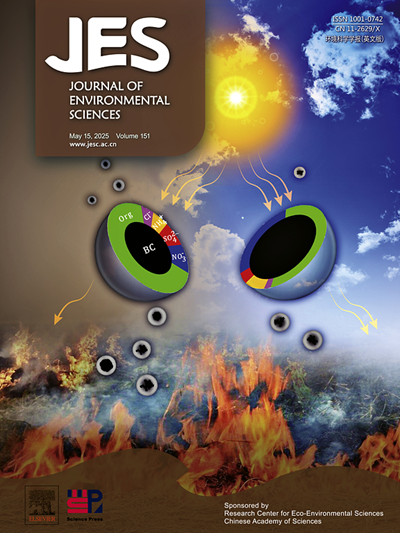A new perspective on the simultaneous removal of nitrogen, tetracycline, and phosphorus by moving bed biofilm reactor under co-metabolic substances
IF 5.9
2区 环境科学与生态学
Q1 ENVIRONMENTAL SCIENCES
引用次数: 0
Abstract
With the burgeoning growth of aquaculture industry, high concentration of NH4+-N, phosphorus and tetracycline are the prevalent pollutants in aquaculture wastewater posing a significant health risk to aquatic organisms. Therefore, an effective method for treating aquaculture wastewater should be urgently explored. Simultaneous removal of NH4+-N, phosphorus, tetracycline, and chemical oxygen demand (COD) in aquaculture wastewater was developed by moving bed biofilm reactor (MBBR) under co-metabolic substances. The result showed that co-metabolism substances had different effects on MBBR performance, and 79.4 % of tetracycline, 68.2 % of NH4+-N, 61.3 % of total nitrogen, 88.3 % of COD, and 38.1 % of total phosphorus (TP) were synchronously removed with sodium acetate as a co-metabolic carbon source. Protein (PN), polysaccharide (PS), and electron transfer system activity were used to evaluate the MBBR performances, suggesting that PN/PS ratio was 1.48, 0.91, 1.07, 3.58, and 0.79 at phases I-V. Additionally, a mode of tetracycline degradation and TP removal was explored, and the cell apoptosis was evaluated by flow cytometry. The result suggested that 74 %, 83 %, and 83 % of tetracycline were degraded by extracellular extracts, intracellular extracts, and cell debris, and there was no difference between extracts and non-enzyme in TP removal. The ratio of viable and dead cells from biofilm reached 33.3 % and 7.68 % with sodium acetate as a co-metabolic carbon source. Furthermore, Proteobacteria and Bacteroidetes in biofilm were identified as the dominant phyla for tetracycline and nutrients removal. This study provides a new strategy for tetracycline and nutrients removal from aquaculture wastewater through co-metabolism.
求助全文
约1分钟内获得全文
求助全文
来源期刊

Journal of Environmental Sciences-china
环境科学-环境科学
CiteScore
13.70
自引率
0.00%
发文量
6354
审稿时长
2.6 months
期刊介绍:
The Journal of Environmental Sciences is an international journal started in 1989. The journal is devoted to publish original, peer-reviewed research papers on main aspects of environmental sciences, such as environmental chemistry, environmental biology, ecology, geosciences and environmental physics. Appropriate subjects include basic and applied research on atmospheric, terrestrial and aquatic environments, pollution control and abatement technology, conservation of natural resources, environmental health and toxicology. Announcements of international environmental science meetings and other recent information are also included.
 求助内容:
求助内容: 应助结果提醒方式:
应助结果提醒方式:


